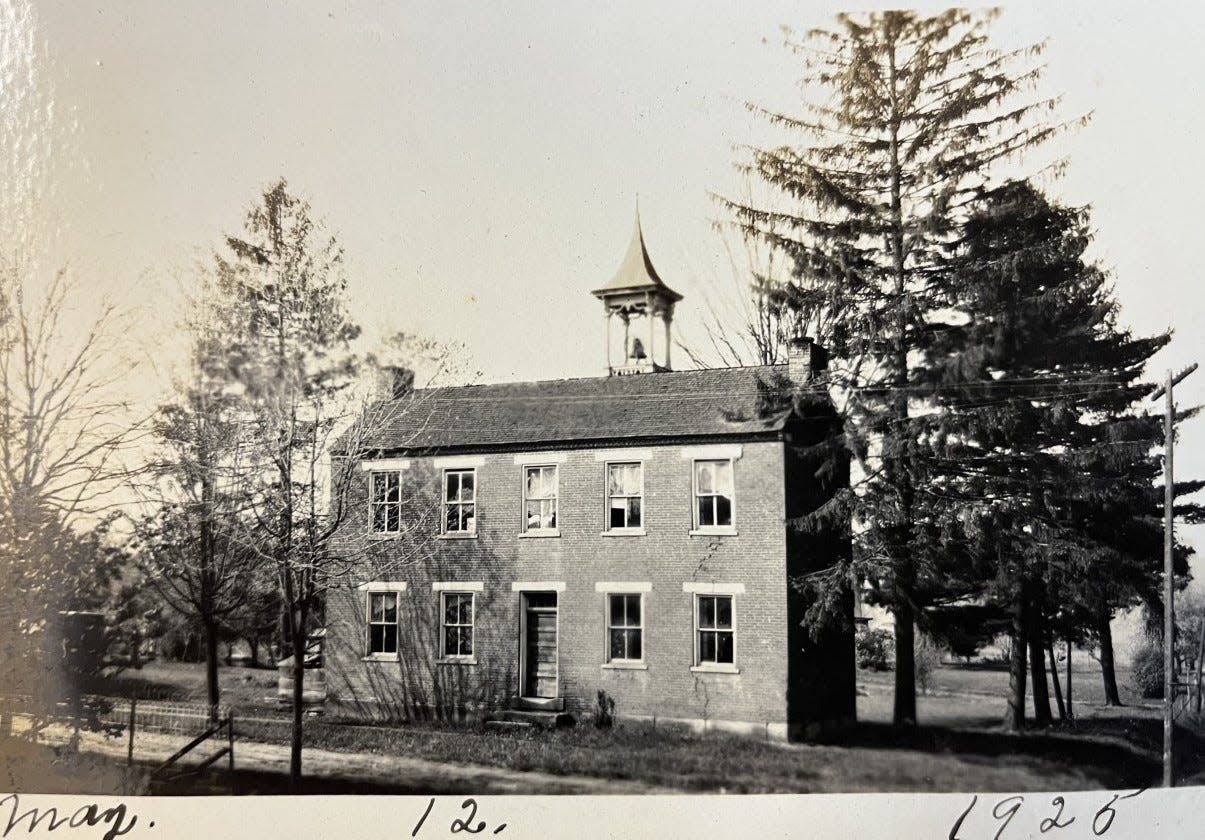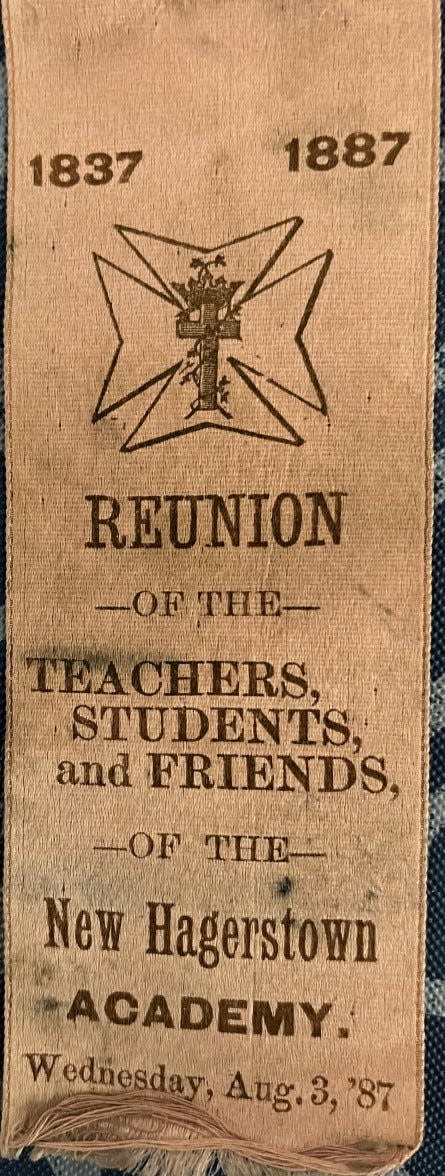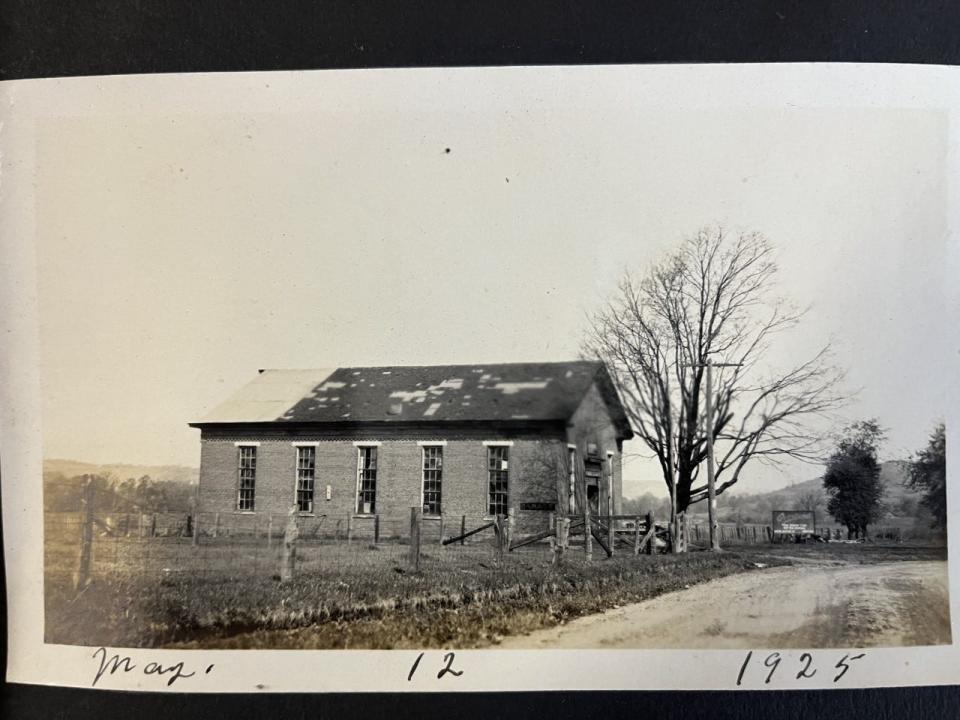Hooked on History: Three talented men shaped New Hagerstown in 19th century

Sometimes, the success of a community is determined by the character of the people who live there.
Such was the case with New Hagerstown, a tiny community in the southwest corner of Carroll County. During the 19th century, three men turned the town into an important educational center through the operation of the New Hagerstown Academy. The academy existed before many area high schools were established, and it trained about 2,000 young men and women to become teachers or prepared them for college.
More:Hooked on History: Storybook Lane remains beloved local Christmas tradition
More:Hooked on History: Talent, car show wins in '65 marked Sam Hitchcock's good year
The first of those men was Samuel Dunlap, who founded New Hagerstown in 1816. He was born in Lancaster County, Pa., in 1770. Eight days after he was born, his mother died. He was raised by his grandmother, who, according to a history of the New Hagerstown Presbyterian Church, "seems to have been a godly woman and to have discharged her duty well."
When he was 16, Dunlap moved with his father to West Liberty, W.Va. He became an elder in his church there in 1792 when he was 22. In 1802, he moved to what is now Harrison County, Ohio. He became a man of prominence, serving in both the Ohio House of Representatives and the Ohio Senate. He moved to the Conotton Valley in 1815 and founded New Hagerstown the following year.
Dunlap showed his concern for the young people in his community by gathering them in his home for religious instruction. His home was also a tavern. He would conduct services in the barroom on Sundays.
The Rev. Richard Brown
In 1836, the second man to shape the community, the Rev. Richard Brown, was installed as pastor of the New Hagerstown Presbyterian Church.
Brown was born Feb. 1, 1796, in Wellsburg, W.Va. His father, Capt. Oliver Brown, was a veteran of the Revolutionary War and fought at the Battle of Lexington, Mass. Richard Brown attended Jefferson College in Canonsburg, Pa., and Princeton Theological Seminary in New Jersey. Following his ordination in 1824, he worked for a time at a Presbyterian Indian mission on the Maumee River in western Ohio.
Soon after Richard Brown moved to New Hagerstown, Samuel Dunlap suggested to him that an academy would be a benefit to the community. A community meeting was held on Jan. 10, 1837, and it was decided to send a resident to Columbus to secure a charter for the school. Dunlap volunteered to go.
Dunlap, then age 66, rode to Columbus and back on a borrowed horse, a distance of 218 miles, to get the school established. He succeeded in securing a charter.
Both Dunlap and Brown served on the school's first board of trustees, with Brown as president of the board.
The trustees of the new academy had a two-story red brick structure with a bell tower erected at a cost of $1,275 on ground donated by Barnhart Bower of Bowerston. To guarantee the school's success, the trustees pledged to pay the first principal a salary of $300 per year, a large sum in those days.

Launching the New Hagerstown Academy
The school opened in the fall of 1837 with three pupils, including Richard Brown's 4-year-old son Fassitt.
By 1845, the academy had 79 male students, the majority coming from Carroll, Harrison, Jefferson and Tuscarawas counties, according to an advertisement published in the Cadiz Sentinel that year. There were also a couple of students from Medina County and one from Pittsburgh. The course of study covered such topics as Latin, Greek, mathematics, natural sciences and intellectual and moral sciences.
Tuition for those pursing the common branches of English education was $6 for a five-month session. Those studying mathematics and the classics paid $10 per session. Students could board with families in town at a cost of $1 to $1.25 per week. Washing was 50 cents per month.
A young ladies' high school was run in conjunction with the academy. In 1845, it had 45 students.
The New Hagerstown Academy ran into difficulties during the Civil War when many of its young male students went to serve in the military. It rebounded when the war ended in 1865, but it faced another challenge ‒ many communities in the Tuscarawas Valley began to open high schools, limiting the supply of students to the academy.
The school was able to survive throughout the last part of the 19th century, thanks to the efforts of the third man, Professor John Howard Brown, son of the Rev. Richard Brown.
The younger Brown was born in New Hagerstown on Feb. 14, 1842. He began his education at the Young Ladies' Seminary in his hometown. As a young man, he taught school in Columbiana and Jefferson counties. He served in the 98th Ohio Volunteer Infantry during the Civil War, getting wounded in the shoulder during the Battle of Perryville, Ky., on Oct. 8, 1862.

After the war, he attended Washington & Jefferson College in Washington, Pa., graduating in 1869. He became principal of the New Hagerstown Academy in 1875 and remained there for 21 years, before retiring in 1896.
Brown enjoyed a solid reputation as an educator. "The spring term of the New Hagerstown Academy begins Monday, April 5, and will as usual be under the direct supervision of Prof. J. Howard Brown, whose ability and long experience as an instructor is sufficient to guarantee its sure success," the Conotton Valley Times newspaper reported in 1886.
When Brown retired, the board of trustees was unable to find another teacher to take his place. The academy closed, though attempts were made to reopen it. They were unsuccessful.
The academy building stood empty for many years before it was finally torn down sometime in the 1940s. Today the site is marked by a historical marker erected by the Carroll County Historical Society in 1972.
The three men who put New Hagerstown on the map ‒ Samuel Dunlap, Richard Brown and John Howard Brown ‒ are all buried in the small cemetery in the community.
Jon Baker is a reporter for The Times-Reporter and can be reached at jon.baker@timesreporter.com.
This article originally appeared on The Times-Reporter: Three men shaped New Hagerstown history in 19th century.

